Myst
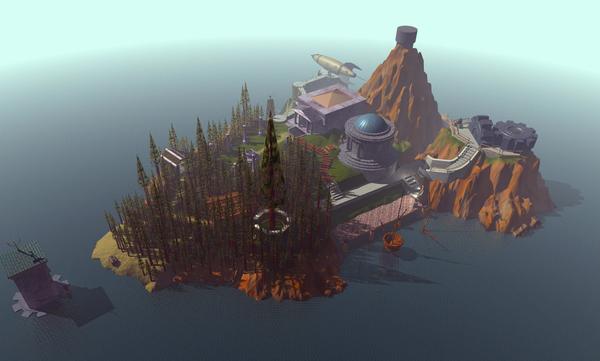
Myst is a game I had been mystified by as a kid, but never played. For decades you couldn’t walk down the software aisle in a store without seeing that iconic box art (at least until most people started getting their software online). Having enjoyed, what I can only assume are, spiritual successors like The Witness, I decided this holiday break I would finally play it.
This isn’t meant to be a review or retrospective on the game, but only my thoughts having recently finished it.
There are some spoilers in here, be warned, in case you haven’t played this 30 year old game.
A Remake
I didn’t play the original 1993 release of Myst but instead the 2021 3D remake by Cyan Worlds Inc. I’ll try to differentiate my thoughts on Myst itself and this particular iteration of the game. Or at least as much as I can, given I haven’t played any of the older versions and therefore don’t have a point of comparison.
The Cyan Worlds remake built from scratch in the Unreal engine, and I gotta say that it looks very nice. It also ran great on my first-generation Steam Deck.
Obviously the biggest departure is the change from 2D graphics with classic screen-by-screen navigation to a fully 3D environment that you can freely traverse. The experience felt very natural, but I can’t say if anything is lost in the transition.
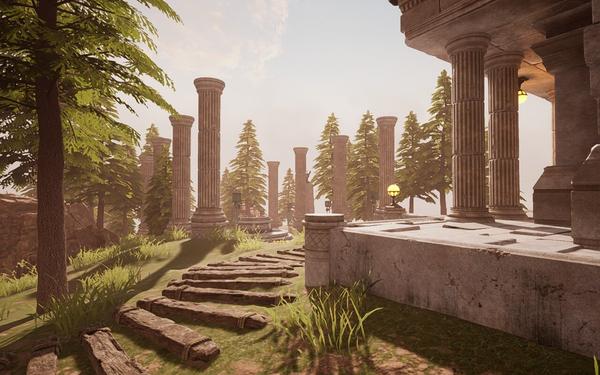
There appear to be some clear quality of life improvements, like the ability to use an in-game camera to save images of clues for later, which I can’t imagine was in the original. This turned out to be very helpful, and saved me from having to break out the pen-and-paper as often. Unfortunately the effective focal length of this camera is too long, and often important information is cut off, despite what the frame lines in the UI indicate.
There were a few times the controller-based layout lead to some confusion, which I’ll cover later, so I think it may be a slightly better experience using a keyboard and mouse. Even still, playing on a controller is mostly fine.
Expectations
Having known about Myst for so long, I had a pre-existing vision of the game in my mind. While roughly held true, there were some elements of the game that still surprised me.
I’d seen screenshots of the starting place in the game, which I now know is the titular island of Myst. What I didn’t know was the island actually serves as a hub area, and in addition to solving puzzles on Myst, you’ll be traveling to other locations, or as the game’s lore refers to them, Ages.
I had no expectation of a story, and while there is one, it isn’t very consequential to the gameplay or puzzle solving. You can read about it elsewhere if you are interested and don’t already know it, but I thought it was satisfactory. Maybe a bit 90’s campy with the full motion videos but I’m all for that.
The real meat of the game are the puzzles of course.
Puzzle Tropes
If I keep in mind that Myst is a game as old as I am, the puzzles hold up pretty well. Having played a lot of video games, and solved a lot of puzzles in those video games, it’s hard not to see the various tropes Myst’s puzzles fall into.
Blind Navigation
These are the puzzles where you navigate through a maze or level without a direct representation of where you currently are.
There’s an example of this in the Mechanical Age, where you rotate the fortress at the center to access outlying islands without being able to see it’s current position. Audio cues and knowledge gained from elsewhere on the map must be used to correctly align the fortress.
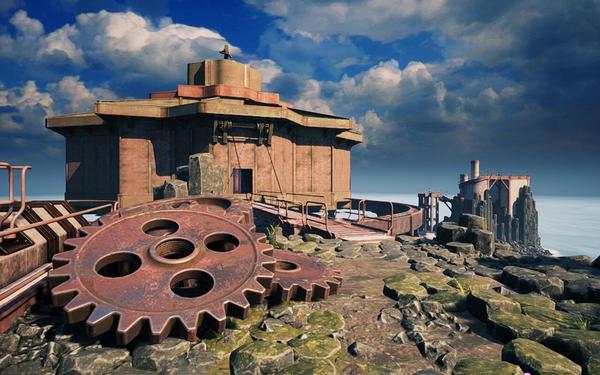
The ultimate form of the blind navigation trope is the large underground tramway in Selenitic. You can command the tram to move forwards, backwards, and turn in all cardinal/ordinal directions. This puzzle was a real pain. I needed to slowly discover the layout, recording it with pen-and-paper, and use a form of dead reckoning to navigate my way through, taking the better part of an hour.
Align the Spinny Thing
The aforementioned Mechanical Age fortress falls into this category, but the most memorable example was the clock tower on Myst Island itself. Not for the best of reasons either.
In the clock tower, you have two levers that spin the top or bottom two cogs of a shaft, respectively. On each tooth of the cogs is a number, and you need to align these such that they form a specific sequence. You can only rotate so many times before the puzzle needs to be reset.
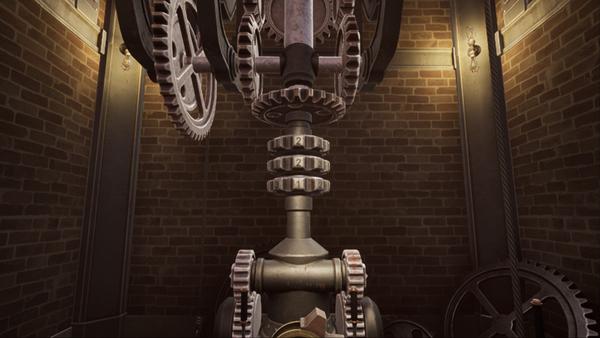
I must have spent half an hour trying different combinations without success. I didn’t see any obvious way to figure out the pattern to form the sequence, so I started to wonder if I could brute-force the answer.
I made some assumptions about the number of possible sequences, and noticing the number of possibilities was very small by computer standards, figured I could write a program to search for the solution.
#!/usr/bin/env ruby
(2**9 - 1).times do |n|
steps = n.to_s(2).rjust(9, "0").tr("01", "lr").chars
cogs = [3, 3, 3]
turn = -> (n) { cogs[n] = [(cogs[n] + 1) % 4, 1].max }
steps.each do |step|
case step
when "l" then
turn.(0)
turn.(1)
when "r"
turn.(1)
turn.(2)
end
if cogs == [2, 2, 1]
puts "Solution: #{steps.join(", ")}"
exit
end
end
end
puts "Huh, no solution?"
Unfortunately, this program never ends up finding a solution. In fact, I should have trusted my intuition that, given the in-game actions I thought were possible, there is no solution.
Returning to the game, only by chance did I notice that holding down the right lever slightly longer causes just the center gear to continually spin. With this knowledge, solving the problem was trivial.
In my defense, I didn’t think this version of Myst did the best job of teaching the player all of the input mechanics. Especially when using a controller and interacting with certain levers. There’s a combination of buttons and the analog stick controls that isn’t immediately obvious, nor do the onscreen tutorials teach the player about them.
Audio Cues
These are my least favorite in any puzzle game. The Witness had audio puzzles in a few places and I didn’t like them there; Myst has them, and I like them even less.
One such puzzle is in the spaceship, where you need to play certain notes on a piano, identify the pitch, and then adjust knobs on another console so they match the pitch in the same order. Horrible.
I was thankful this remake has an audio option called “Gameplay Context Subtitles”, which in the case of the spaceship puzzle, showed the exact note (i.e C#) that was being played. It would have taken me much longer and with high frustration to have solved that puzzle without that setting.
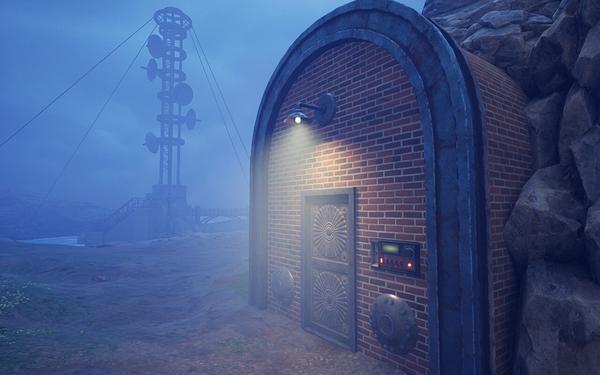
There are a smattering of other places where special sound effects are played to indicate a certain puzzle state. I don’t mind them as much, but I’d prefer more visual cues. In Myst’s defense, maybe it was easier develop a game that leaned on audio during some of these other segments. Or, perhaps reasonable quality game audio in a home computer was a novel thing, and they wanted to incorporate it more into the game.
Maybe that was a lot of complaining about Myst’s puzzles. Really, most are pretty good.
Atmosphere
I loved the look of all of Myst’s various Ages, or at least in this modern interpretation. Each was memorable, with its own distinct style, but clearly part of the larger world of Myst.
Yes, some of the design clearly show their early 90’s roots, but I find it endearing. How every elevator has a door that you need to close manually before operation. Safety first! Or, all of the steampunk style elements that I also recall seeing in other adventure-style games from that era.
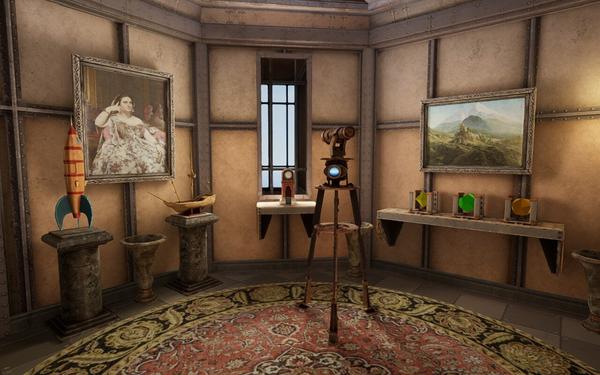
There’s a feeling of loneliness and isolation in these types of games that, for whatever reason, I find very calming. Many other games I play tend to be faster-paced 1, so taking my time to explore these worlds was a welcome change of pace.
Final Thoughts
If you are like me, someone who never played Myst and enjoys puzzles or exploration, I’d recommend trying this classic game. I actually think it’d be fun to play the original, just to see how faithfully it was represented, and observe any differences.
Since I know even less about them, I’d eventually like to experience the Myst sequels. Maybe next year I’ll travel to Riven!